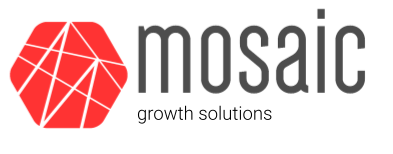In this Mosaic Minute, we are diving into how to market to potential customers based on their awareness. While “demand generation” is a commonly used and widely accepted marketing term, it’s actually a bit of a misnomer – marketing can’t actually generate the demand itself. Demand stems from a need or opportunity, and if a B2B user/buyer doesn’t have a need or isn’t aware they have a need, no amount of marketing will move them to become an active buyer.
To put this into actionable context, let’s think about 3 different buyers that likely exist within your ideal customer profile (ICP). Remember, from our previous article about Mapping the Market Opportunity, once a buyer commits to seeking a solution, they move from being an ideal customer to an active buyer.
3 Types of Buyers In Your ICP
- No Need Buyer – Buyer simply does not have a need for your solution/product today
- Unaware Buyer – Buyer has an existing need but is unaware of this need
- Uninspired Buyer – Buyer recognizes a need/feels a pain point but is not seeking a solution at all or is still debating whether to invest in a solution
- Active Buyer – Buyer recognizes a need/feels a pain point and is actively seeking a solution.
No Need Buyer
For the no need buyer, the best you can do from a marketing perspective is focus on building brand awareness, authority, and trust so, if and when the need arises, your brand is most definitely part of the consideration set. Recommended tactics include consistent outreach with content that demonstrates authority and thought-leadership as well as content that offers valuable tips & tricks (that can be applied without your software, although perhaps not as efficiently or well)
Unaware Buyer
If your prospect has a need, but isn’t aware of this need, then you have to help them understand they have a need. Sometimes a potential buyer may have come to accept an addressable pain point as “part of the job.” In other cases, there may be an entirely new need, driven by market dynamics or regulatory changes, that the buyer may not yet be familiar with. A recent example from one of our clients – FASB-driven changes to how companies account for leases greatly increased the complexity of lease accounting, driving a need to replace manual processes with more sophisticated software. A large part of the client’s marketing efforts were focused on educating ICP buyers that achieving compliance without software of any kind would be nearly impossible.
Uninspired Buyer
A buyer can fall in this category for 2 reasons – either they think they don’t need a solution or they are unaware that a solution even exists. To make meaningful connections with these buyers, marketers should focus on creating awareness around its category of
solutions. In our previous example, our client spent a lot of time educating buyers on the category of lease accounting software, including why software, which was previously unnecessary, is now integral given the significant complexity of the new standards and high risk associated with non-compliance.
TL;DR
The key to successful marketing isn’t demand generation, it is understanding your prospects’ stage of awareness so that you can use the strategies and tactics that will move them. In future Mosaic Minutes, we will go into greater detail about the best ways to target and message buyers based upon their awareness, but for now think about your prospects in terms of what a prospect in each stage of awareness would be doing so that you can develop tactics to engage with them. This will be a key component of developing personas to help you better understand your prospect.


Recent Comments